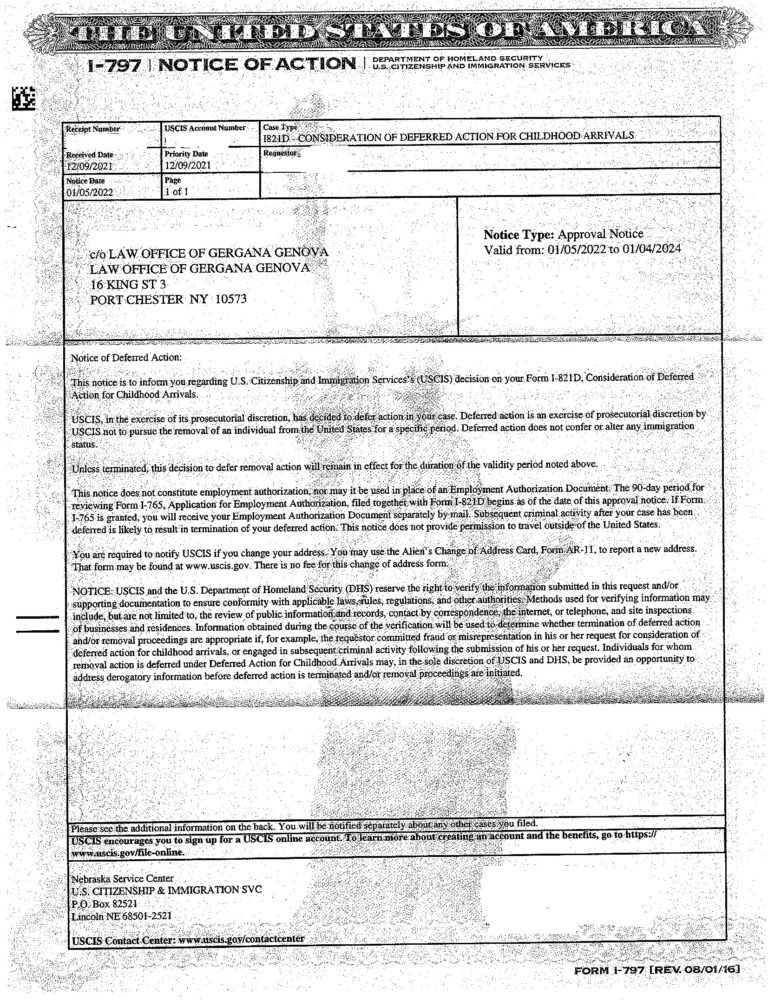DACA
DACA
Somedays it feels like it is a full time job just keeping track of all the DACA changes. We can all agree that this has been the most litigated topic in Immigration lately. Let’s go over what is the program now and how is eligible to apply.

What is the gist of DACA?
With DACA, the Department of Homeland Security (DHS) cannot deport certain youth, who came to the United States as children. DACA recipients are eligible for a work-permit for two years, with the opportunity to renew. As of now, it is not a path to permanent residence or citizenship.
What are the requirements for an initial application?
- Were under the age of 31 as of June 15, 2012.
- And Came to the United States when you were 15 years old, or younger.
- And have lived in the United States at least from June 15, 2007, or earlier, up to the present time.
- Also had no lawful status on June 15, 2012.
- And are currently in school, are a high school graduate, or have a GED certificate, or are an honorably discharged veteran of the Coast Guard or Armed Forces.
- And do not have any felony, significant misdemeanors, or three or more other misdemeanors,
Where do we stand today?
Consistent with the order from the case of State of Texas vs. the United State of America, , DHS is still accepting both initial and renewal DACA applications. DHS is also still accepting employment authorization application.
However, under the same order from the Southern District of Texas, DHS cannot grant initial DACA requests and employment authorizations.
To stay updated, follow the top section of the USCIS page here.
This is what USCIS is currently able to accept and process:
- Accepting first-time DACA requests based on the terms of the DACA policy in effect prior to Sept. 5, 2017; and
- Accepting DACA renewal requests, and
- Accepting applications for advance parole documents; and
- Grants of deferred action are now for two year increments, instead of one; and
- Work permits will be valid for two years instead of one.

Schedule a Consultation Today
Book 1 on 1 Call with me!


